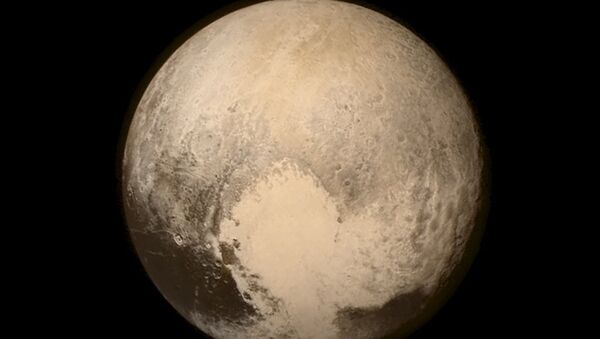YES! After over 9 years & 3+ billion miles, @NASANewHorizons #PlutoFlyby was at 7:49am ET. http://t.co/Czrvonxugd pic.twitter.com/aSucgORofT
— NASA (@NASA) 14 июля 2015
Hello #Pluto! We’re at closest approach. Congrats to all! Follow our story & view new images using #PlutoFlyby. pic.twitter.com/8JVlJrcUkY
— NASA New Horizons (@NASANewHorizons) 14 июля 2015
The @NASANewHorizons team reacts to seeing images of Pluto #PlutoFlyby @nasahqphoto pic.twitter.com/E8BODPnvg9
— NASA Goddard (@NASAGoddard) 14 июля 2015
In January 2006, the New Horizons probe set off on its journey to what we have previously seen only as a faint point of light in the outer reaches of the Solar system. Nine and a half years and some 3 billion miles later the spacecraft managed to take a very close look at the dwarf planet, discovered by Clyde William Tombaugh in 1930.
How did Tombaugh discover #Pluto in 1930? Very slowly! :-) Thx @PercivalLowell for sharing original #Pluto plates. pic.twitter.com/KIbWOhETgR
— NASA New Horizons (@NASANewHorizons) 14 июля 2015
#OldSchool. Original #Pluto telescope @PercivalLowell, where Clyde Tombaugh discovered #Pluto in 1930. #PlutoFlyby. pic.twitter.com/NRpz2RQPUE
— NASA New Horizons (@NASANewHorizons) 14 июля 2015
Unfortunately Tombaugh did not live to see the probe's launch, let alone the incredible flyby. In a beautiful tribute to the astronomer, the New Horizons probe carried an ounce of his ashes aboard, making him in a sense the first human to visit the dwarf planet.
Back where it all began, 85 years ago — @PercivalLowell in Flagstaff, Arizona. Have you been there? #PlutoFlyby pic.twitter.com/nkVDu2iX3S
— NASA New Horizons (@NASANewHorizons) 14 июля 2015
Thanks to New Horizons, we no longer have to rely on the artists' impression of what used to be considered the ninth planet in our Solar system. The probe has sent countless magnificent images of Pluto and a kiss from the rocky world back home.
Great scale graphic of #Pluto & its moon Charon compared to our pale, blue dot. My new fav pic…. for NOW! ;-) pic.twitter.com/hhWQVHzuXe
— NASA New Horizons (@NASANewHorizons) 14 июля 2015
Researchers expect to receive a treasure trove of invaluable data on Pluto's atmosphere, surface, temperature, etc. in the days and months to come. But the mission has already helped us to learn more about the dwarf planet and its moons then even before. For instance, it was only on Monday that we found out Pluto's true size.
Right NOW, I'm looking at #Pluto's atmosphere. Yes, it's got one! It's just rarified… #PlutoFlyby pic.twitter.com/jMFKZvFyA9
— NASA New Horizons (@NASANewHorizons) 13 июля 2015
Just how big (or small) is the dwarf planet #Pluto? How about a "Pluto-Perspective" for scale reference. :-) pic.twitter.com/oXcZ5BNhbq
— NASA New Horizons (@NASANewHorizons) 8 июля 2015
The small probe, which passed within 7,750 miles of Pluto, is still busy collecting data and will contact the Earth on Wednesday. The transmission will serve as the ultimate confirmation of the mission's success.
Celebrate with us! Watch @NASANewHorizons coverage. LIVE NOW: http://t.co/KX5g7yYnYG #PlutoFlyby is at 7:49am ET! pic.twitter.com/8JdSzLrg3l
— NASA (@NASA) 14 июля 2015

